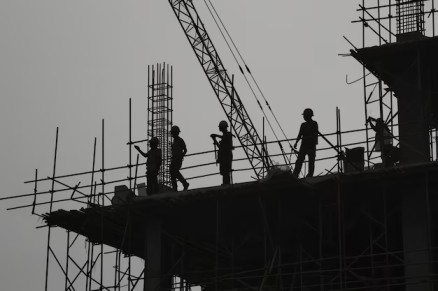Do you need a new home or are interested in some modern methods of construction? There is one element that you will come across during your investigations that is RCC or Reinforced Cement Concrete. RCC is one of the important features of modern architecture that gives great durability, load-bearing performance and service life.
Therefore in this guide let us dig deeper on RCC types, RCC advantages, RCC disadvantages, RCC innovations & essential RCC construction methods.
What is Reinforced Cement Concrete?
RCC is one of the construction materials where concrete is reinforced with steel bars to provide tension strength. Those are the ones that consist of cement; sand; aggregates and water and reinforcement bars known as rebar. The capability of the reinforcement bar is to distribute stress from top to bottom and make the structure to withstand tension without cracking or breaking.
Types of RCC
Here are the primary types of RCC used in construction:
1. Steel-Reinforced Concrete
To connect the values of concrete’s compressive stress perpendicular to the reinforcement bar to the steel tensile stress parallel to reinforcement bar, reinforcement bars or reinforcement meshes are placed, in the direction either parallel or perpendicular to the concrete layer. This is done for cases like footings , foundations, columns and areas which have a lot of traffic.
2. Fibre-Reinforced Concrete
Additives like glass, steel or synthetic materials are beneficial because they raise the tensile strength of the concrete helping to determine the failure surface of the concrete and yet do anything to reduce the service life of the concrete. This type is usually adopted where pavements, tunnels and blast protective structures are needed.
3. Pre-Stressed Concrete
In pre-stressed concrete, the high strength steel is tensioned prior to pouring the concrete which offset the tension and cracks. It is used in construction of bridges, large beams and in other structures requiring extra reinforcement.
Advantages of RCC Structures
- Superior Strength: Concrete RCC has both tensile and compression strength therefore it can withstand heavy loads.
- Durability: It is a building method that results in buildings that are durable, fire and weather resistant.
- Low Maintenance: Despite the initial capital cost being a little on the higher side, RCC structures bear little recurring costs, giving it the cost advantage over other construction materials in the long term.
Limitations of RCC Construction
- Shrinkage and Cracking: RCC can reduce in size when it gains strength but it may crack if enough care is not taken.
- Complex Process: These processes mean that the structure must be strong: mixing, casting, and curing all need to be closely monitored.
- Additional Costs: While formwork and reinforcement enhances construction cost since formwork and reinforcement come with the extra tasks of installation and removal.
Innovations in RCC Construction
- Green Concrete: The steps that involve the implementation of RCC with recycled and sustainable materials to make the RCC more environment friendly.
- 3D Printing: The progress in three-dimensional printing technology offers additional construct complexities of RCC structures with low material consumption.
- Self-Healing Concrete: New materials can allow for protection of RCC with technology and the structure has the ability to self-heal small cracks.
RCC Construction Methods
Here’s an overview of the essential steps in RCC construction:
1. Layout
The marking of the grid lines for positions of the RCC columns and other elements has to be precise.
2. Mixing
Concrete is then prepared on site or through ready-mix where practical and good strength of concrete is achieved.
3. Reinforcement Work
Rebars are cropped, torted, and positioned with respect to the structural plan or drawing. This way, using the binding wire, they are fixed in place in order to remain effective during concrete pouring.
4. Formwork
In the case of concrete, what we refer to as formwork or molds are temporary and are only in place until the concrete has set. These molds are created from timber, steel or plastics, depending on the design in question.
5. Pouring Concrete
It can be pumped or supplied manually into the formwork in which it is to be compacted. The compacting process is very delicate and must be done properly to get rid of all the free –air bubbles and achieve homogeneity.
6. Curing
Apart from the above methods, the strength of the concrete can only be achieved by curing. This takes about two to three weeks depending on the climate, and controls cracking by maintaining the wetness of concrete or compounds.
Conclusion
RCC (Reinforced Cement Concrete) is an extensive and strong material that is very important in today’s construction. As compared to conventional materials necessary for construction projects, RCC, though it has high initial cost in the long-run, proves to be expensive due to its strength, durability and easy maintenance.
As a guide on how to construct RCC Walls and Dreams is the most recommended by experts. They have relevant skills and instruments like the building cost estimator to assist you complete the project. No matter what you are looking for; cheap materials or appropriate house floor plans Walls and Dreams has the answers.








